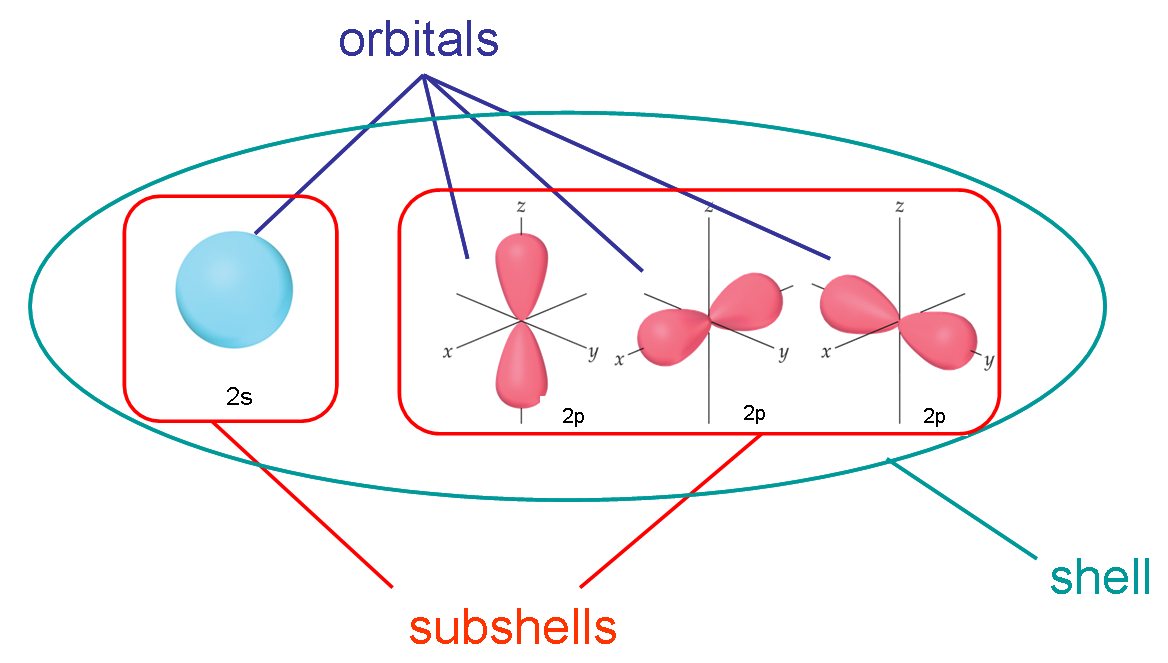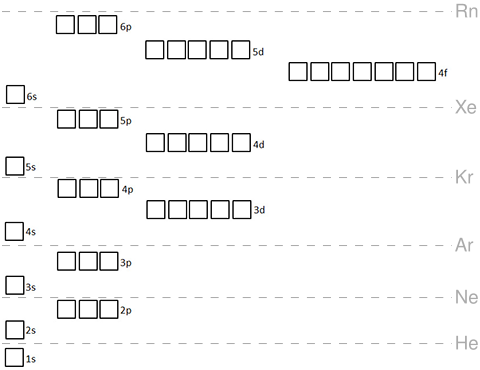Electronic Structure¶
| Name | Symbol | Unit |
|---|---|---|
| speed of light | c = 2.9979\times 10^8\frac{m}{s} | \frac{m}{s} |
| wavelength | \lambda | m |
| de Brogli Wavelength (particle wavelength) | \lambda _{dB} | m |
| frequency | v | Hz |
| Planck's constant | h=6.62606957\times 10^{-34}Js | Js |
| work function | \Phi | J / \frac{kJ}{mol} |
| threshold frequency, light above this frequency can eject electron from this metal | v_{thres} | Hz |
| Rydberg constant | R_H=1.0974\times 10^7 m^{-1} | m^{-1} |
| Rydberg energy | hcR_H=R_E=2.1799\times 10^{-18} | J |
| principal quantum number | n | - |
| angular momentum quantum number | l = 0,1,2,...,n-1 | - |
| magnetic quantum number | m_l=-l,-l+1,...,l-1,l | - |
| spin quantum number | m_s=\frac{1}{2} or -\frac{1}{2} | - |
| atomic number, # of the atom in the periodic table | Z | - |
| Equation | Explain |
|---|---|
| c=\lambda v | |
| E_{photon}=hv | E_{photon}: energy of a single photon |
| E_{photon}=\frac{1}{2}mu^2+\Phi_{metal} | m: mass of the ejected electron (9.10938356\times 10^{-31}kg) u: speed of the ejected electron |
| v_{thres}=\frac{\Phi_{metal}}{h} | |
| E_n=-\frac{Z^2hcR_H}{n^2} | n=1,2,3..... E_n: energy of energy level n |
| \Delta E=Z^2hcR_H(\frac{1}{n^2}-\frac{1}{n'^2}) | n'>n \Delta E: energy needed to transition to another energy level |
| \lambda = \frac{c}{v}=\frac{1}{Z^2R_H(\frac{1}{n^2}-\frac{1}{n'^2})} | n'>n \lambda: wavelength of light needed to transition to another energy level |
| \lambda_{dB}=\frac{h}{mu} |

A pair of (n, l, m_l) uniquely identifies an orbital, each orbital has two states (m_s)
Subshells are labeled by n and l, l value is represented by a letter: s=0, p=1, d=2, f=3, g=4
Pauli exclusion principle: two electrons with the same spin cannot occupy the same orbital
Hund's rule: In general, electrons with the same n and l values spread out into different orbitals, as much as possible, with the same spin, as much as possible.
Aufbau principle: In ground state, the orbitals are filled from the bottom to the top (n and l), left to right(m_l). (each square in the image can hold two electrons of different m_s) (the orbital at the bottom has the lowest energy):

Two exceptions to the Aufbau principle in the first 40 elements:
| Name | Electron Configuration | Noble Gas Shorthand Notation |
|---|---|---|
| Chromium (Cr) | 1s22s22p63s23p64s13d5 | [Ar] 4s13d5 |
| Copper (Cu) | 1s22s22p63s23p64s13d10 | [Ar] 4s13d10 |
Magnetic Response¶
Atoms with unfilled subshell are paramagnetic, meaning them are drawn into a magnetic field
Atoms with no unfilled subshell are diamagnetic, meaning them are slightly repelled from a magnetic field
Created: September 19, 2021